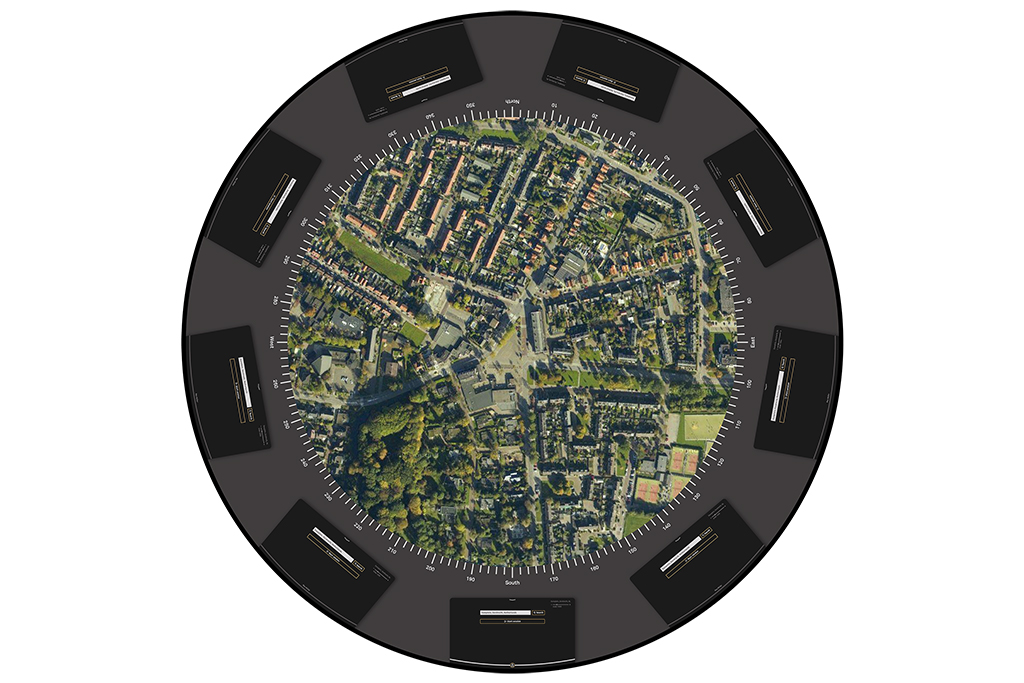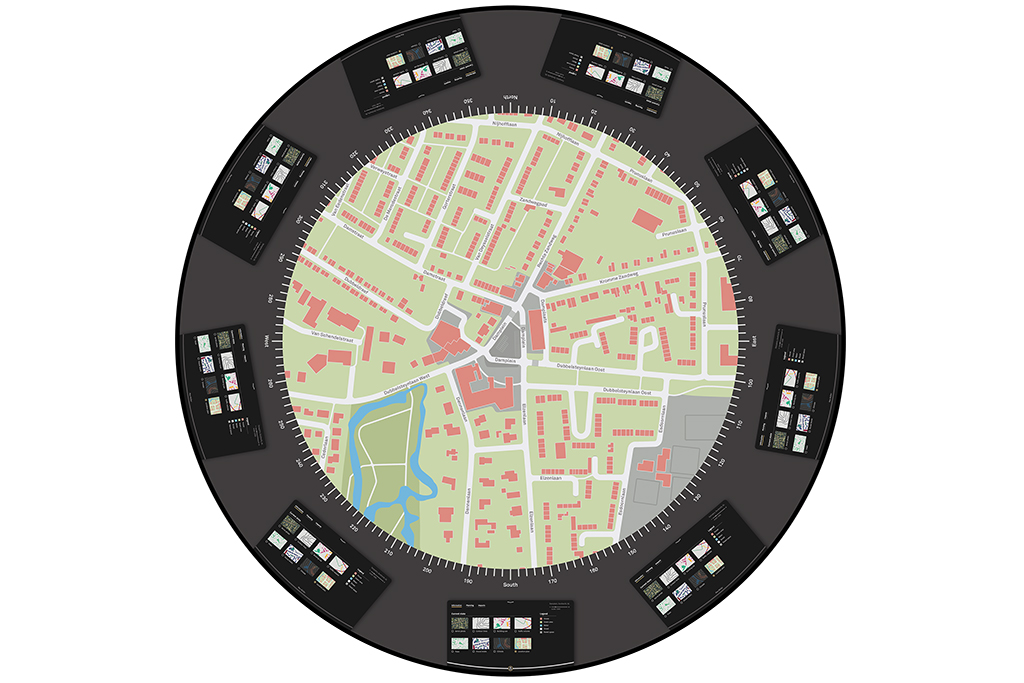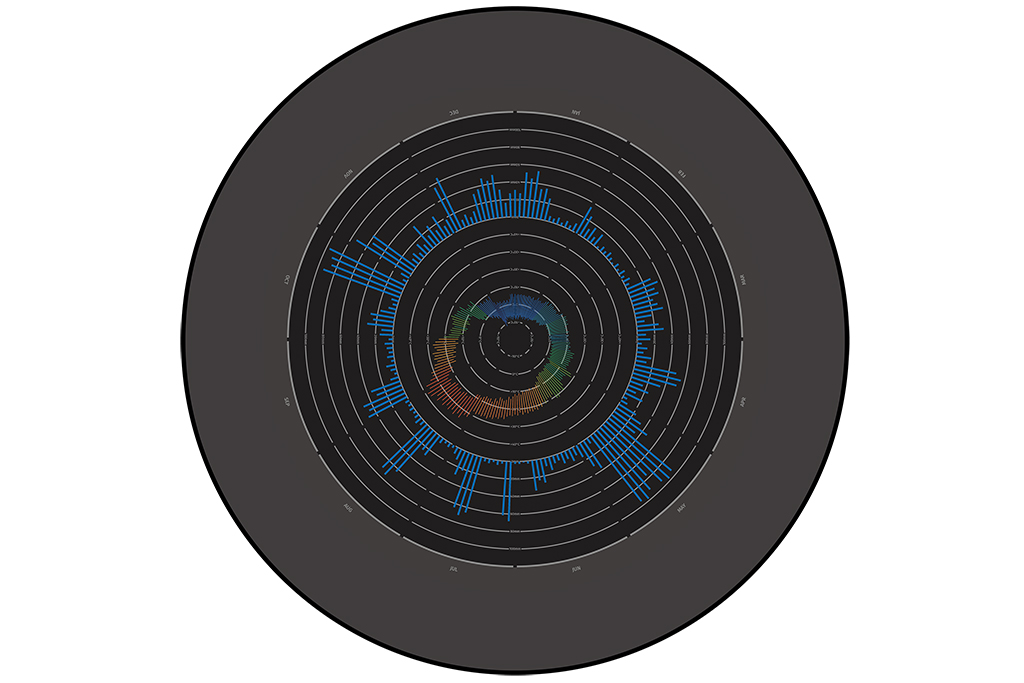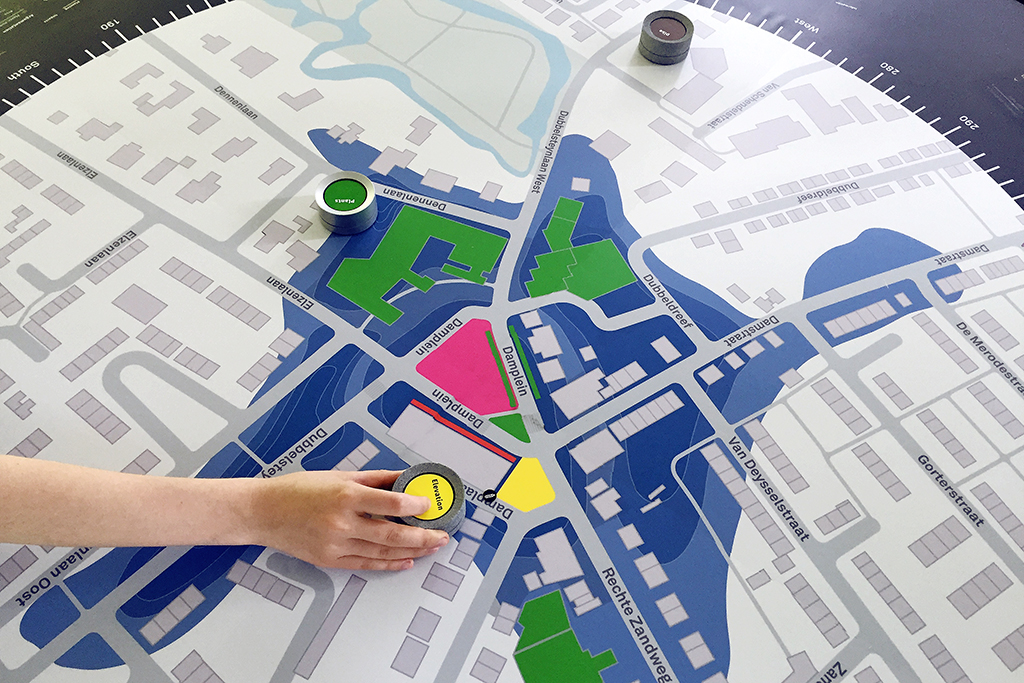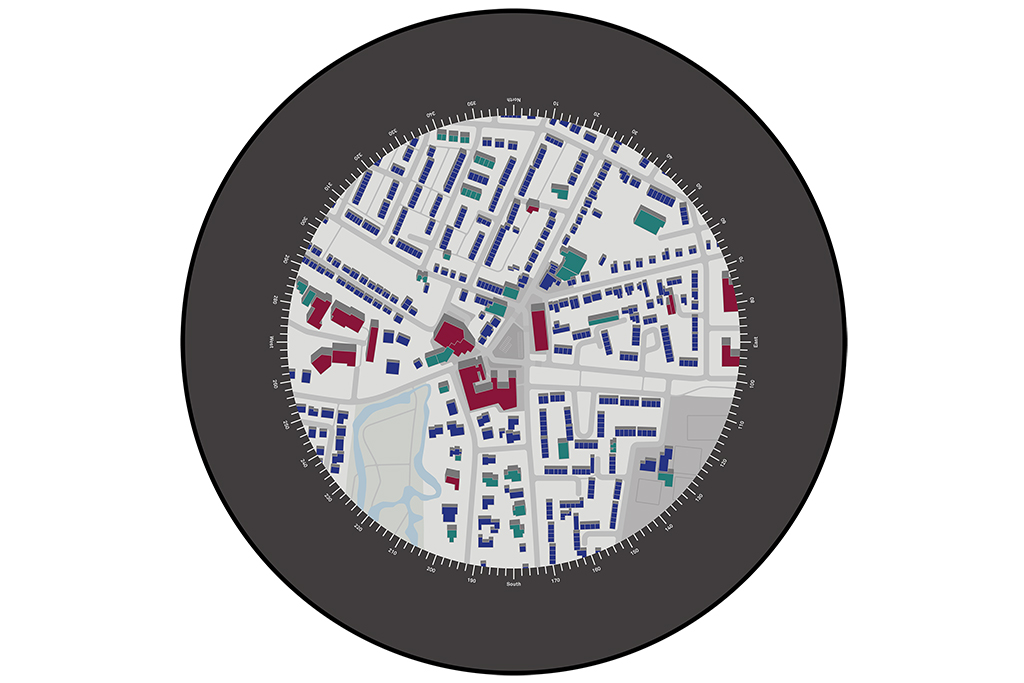Solving Complex Problems Collaboratively—The role of design in inter- and transdisciplinary teams referring to climate resilient urban design.
The master’s thesis examined the competencies and course of actions of design in order to find out its role within inter- and transdisciplinary teams referring to climate resilient urban planning. The result is an operating concept of a multi-touch table which makes designers’ procedures intuitively applicable for its multidisciplinary stakeholders group.
In a nutshell these are making the argumentative process transparent, following up an iterative procedure, reflecting the details and the overall topic continuously and using visualizations as well as models to guarantee common understanding. Hence the touch table provides the team in collaborative decision making of complex problems.
The operating concept is divided into three main categories: “Information” After the presetting is done, the first menu item displays various maps which contain different types of information. These can be discussed with the whole group. All maps present the current state of the specific area. A selection has to be made in order to see the map on the common screen. Details like the legend remain on the integrated screen in order to be readable for all the participants. “Planning” This menu is connected with seven tangible objects. These serve as drawing and selection tools in the map and symbolise various adaptation solution measures. Using a measure tool, a new entry is created automatically. Hence voting and discussion are fostered. The facilitator records the keywords of pros and cons and experts can fine-tune the category of the used measures. A list of all subcategories is therefore provided. The filter options used at the beginning of the session reduce the available variety. As this concept allows to use only seven tangible objects (representing a category of measures) it is much more comprehensible for non-experts. “Impacts” The third menu is connected with the planning actions. A part of the underlying Causal Loop Diagram is visible here in order to avoid information overload. The diagram only shows the direct consequences of the current implemented measures.

